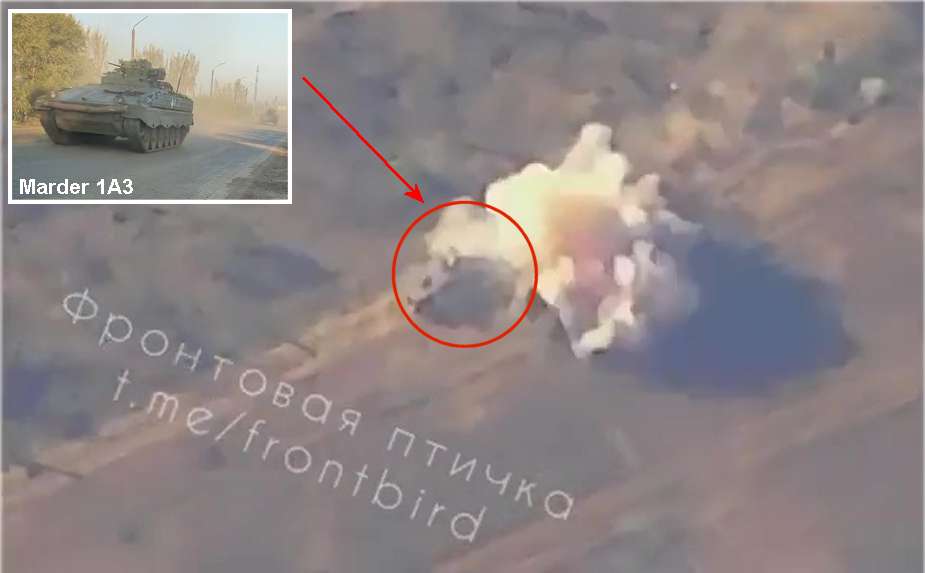In a recent video circulating on the social media platform Telegram, a German-made Marder 1A3 tracked armored Infantry Fighting Vehicle (IFV) donated by Germany to Ukraine appears to have been hit by a missile or to have run over a mine on the frontline. Remarkably, due to the robust armor of the Marder 1A3, the crew and accompanying infantrymen emerged unscathed.
Follow Army Recognition on Google News at this link

Excellent protection of the German Marder 1A3 armored vehicle saved the lives of Ukrainian soldiers. (Picture source Video footage Telegram)
The Marder 1A3, developed by Rheinmetall and introduced in the 1980s, is renowned for its welded steel armor, designed to provide protection against small arms fire, artillery shell splinters, and shaped charge weapons like rocket-propelled grenades. The vehicle's interior is also equipped with spall liners, which further safeguard the crew from potential shrapnel in the event of an external hit. This recent incident underscores the vehicle's reputation for durability and the protection it offers to its occupants.
Since the onset of the conflict, Germany has extended significant military support to Ukraine. This includes the donation of 60 Marder 1A3 tracked armored IFVs, sourced both from the military inventory of the German army and from defense companies. The recent missile strike incident highlights the pivotal role such donations play in bolstering Ukraine's defense capabilities and safeguarding its troops on the ground.
In terms of armor and protection, the Marder 1A3 is constructed with welded steel armor, offering protection against small arms fire and artillery shell splinters. With the 1A3 upgrade, the vehicle received additional armor to bolster its defense against shaped charge weapons, such as rocket-propelled grenades (RPGs) and anti-tank guided missiles. This enhancement was crucial, given the widespread use of such weapons on contemporary battlefields. Furthermore, the interior of the vehicle is equipped with spall liners, which reduce the risk of spalling. Spalling refers to the fragmentation of the inner surface of the armor when the vehicle is struck, and these liners help protect the crew and onboard infantry from potential shrapnel.
When comparing the BMP-1 and BMP-2 IFVs predominantly utilized by the Ukrainian armed forces, they offer less protection than the German-made Marder 1A3. The BMP-1 and BMP-2 are Soviet-made infantry fighting vehicles (IFVs) that were introduced in the 1960s and 1980s, respectively. These vehicles were developed during the Cold War era, with the primary objective of providing the Soviet infantry with mobility, protection, and firepower on the battlefield.
The BMP-1's armor is designed primarily to protect against small arms fire and shell splinters, while the BMP-2, introduced later, has slightly improved armor. However, both vehicles are vulnerable to larger caliber weapons and anti-tank guided missiles. The BMP series was designed with amphibious capabilities in mind, which influenced its armor's weight and distribution. This means that while they can traverse water bodies, their armor might not be as thick or comprehensive as that of the Marder 1A3.
In essence, while the Marder 1A3 and the BMP series were both designed to transport infantry into battle with protection and firepower, their armor profiles reflect different design philosophies and operational requirements. The Marder 1A3 places a heavier emphasis on protection, while the BMP series balances protection with amphibious capabilities.
News Russia Ukraine War
















